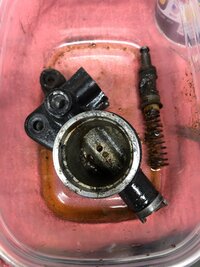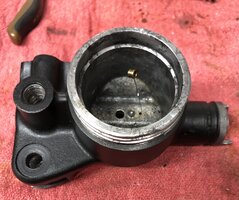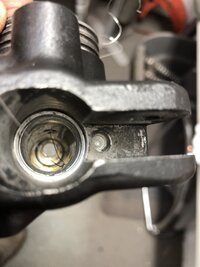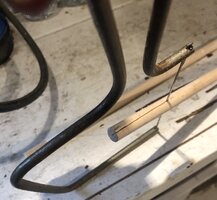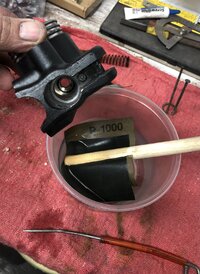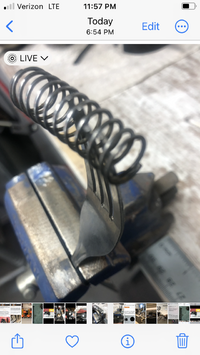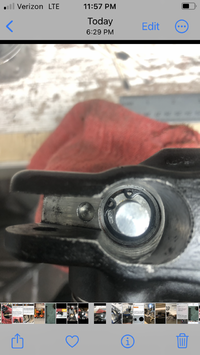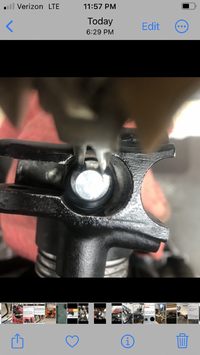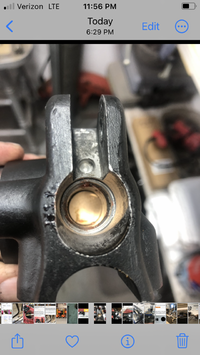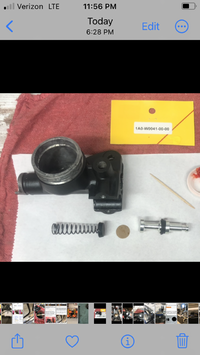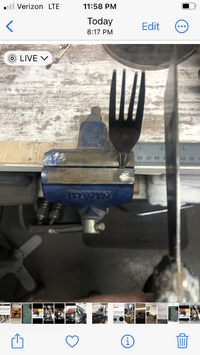Good video with lots of detail, for sure a real help if you've never been in one before.
Agreed often the old parts are "fine"
A worthwhile addition to your shop is a double end scribe or pick.
View attachment 117109
I mention it here cause it's perfect for grubbing out the gunk that has accumulated in the end of the bore over the years. after you get the dust boot out. (you can grab it with a small needle nose and tug and pull it, that rubber is amazingly tough. Use your scribe, work the corner all around the circlip, use the pick to "pop" the eyes loose before you go in with the circlip pliers. If you get the clip loosened and even free enough to spin, the pliers work will go MUCH easier. A long nose micro needle nose will remove the circlip if you have it loosened ahead of time. Doesn't hurt to use a bit of brake fluid on a q-tip to help lube the parts for removal.an air gun also helps get the gunk out, wear glasses!
NO steel, brass, or abrasive brushes in that bore, it's soft aluminum! wad papertowel shove it in push out from the other end repeat as needed. You can make a shop hone with a wood dowel. it doesn't have to be snug a bit smaller than the bore is fine. grab your hack saw and cut a long slit in the end of the dowel saw down a couple inches. Now you can slot a bit of FINE (1500, 2000 grit) wet or dry paper in the slot and wrap it around the dowel. this makes a quite serviceable brake hone. Carefully work the bore a bit I prefer to work wet with a bit of water. Don't use a drill or strong force, just light spin clean up of gunk and any light scratches from dragging out the old stuck parts.
Bob never drill the relief port, it is a VERY fine hole. The factory uses a center drill and just broaches the tip into the bore, they do not use a "fine drill bit" to make the hole. A fine wire will often work to clear the hole. I sharpen a piece of stainless steel safety wire on the bench grinder for fine hole clean out. Some aftermarket MCs have been found with the hole not drilled sloppy tolerences the center drill doesn't QUITE go deep enough. The brake will not relieve pressure without the hole open! 1/16" inch is HUGE, you want a much smaller hole, wheat drill bits can be found. Bob has it right; if you have to clear / drill the hole, go back one more time and hone that bore, so you KNOW no sharp swarf will cut the rubber seals!

